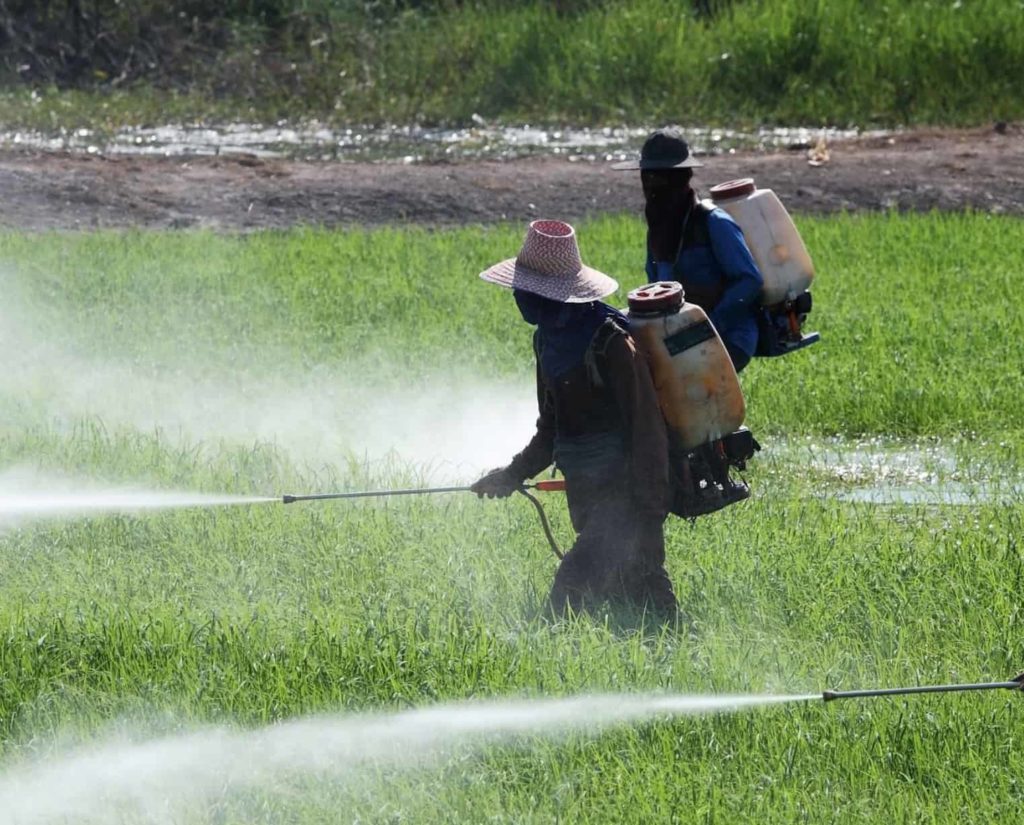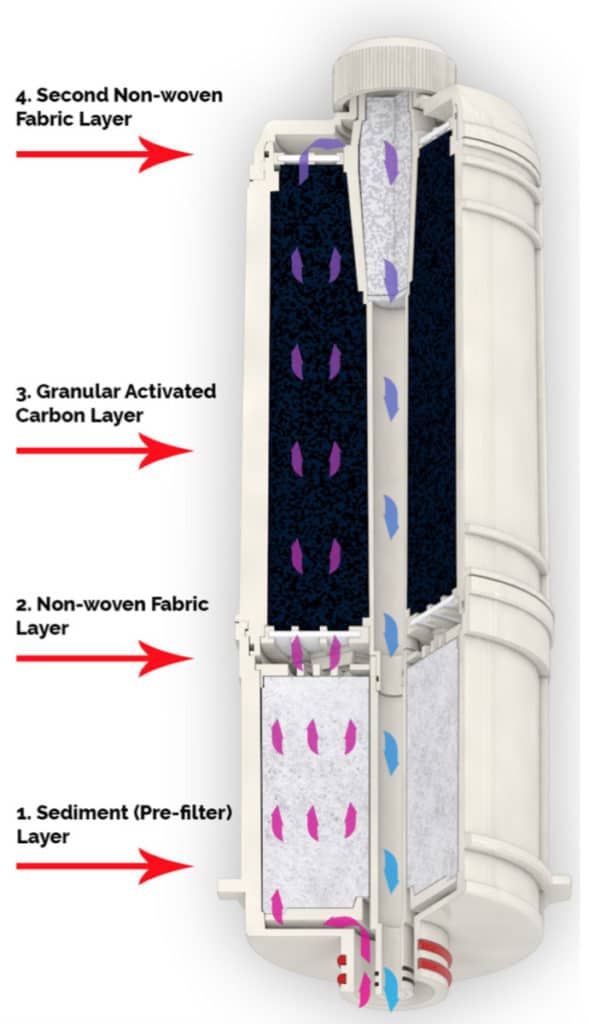
The Pure Water Solution at Home
America’s Troubled Tap
What’s in your water, and why should you be concerned?
Lead
With recent events involving lead contamination of the water supply in Flint, Michigan, lead is a hot topic these days, and for good reason. Lead is soft, has a low melting temperature, and is highly workable. Because of these qualities, lead was widely used in plumbing and piping back in the day. In 1986 and 1996, amendments were made to the Safe Drinking Water Act and the US Environmental Protection Agency’s (EPA) Lead and Copper Rule, which eventually ended its use for these purposes. Despite this, many older homes and city waterways have old lead piping, as these amendments did not affect previous installations. Most of the time, old lead plumbing leaches a minimal amount of the toxic components into the water supply because of a naturally occurring protective scale layer which occurs as water runs through the plumbing. Most utilities treat their water to maintain and protect the scale layer. However, as was in the case with Flint, Michigan, if the water’s condition is not properly maintained, such as the pH of the water, the scale layer can degrade and leach lead into the water. Only specially modified activated carbon filters can filter lead from drinking water. The Alkal-Life 7000sL Water Ionizer's Activated Carbon Filter is designed to reduce lead in water. Test reports on the activated carbon water filter indicates the effective reduction of lead from the water source.
Mercury
Mercury is an extremely toxic, heavy metal which remains in a liquid state at room temperature. According to the World Health Organization (WHO), even lesser amounts of mercury can cause serious health problems. They also consider it to be a serious threat to child development in utero and early in life. Mercury has detrimental effects on many parts of the body including the lungs, kidneys, skin, and eyes. The nervous, digestive, and immune systems are all also affected negatively. How does mercury get into the water supply? Well, mercury is naturally released into the environment through weathering of rocks and volcanic activity (it is found naturally in the Earth’s crust). It is also released into the environment through discharge from refineries and factories and runoff from landfills and agricultural lands. The Alkal-Life 7000sL’s™ Activated Carbon Filter is also designed to reduce mercury in water. The AlkalLife 7000sL’s Activated Carbon Filter utilizes granular activated carbon, which is recommended by the EPA as one of the four Best Available Technologies to control mercury in drinking water, and three additional filter layers.)
Chlorine, Trihalomethanes, and Haloacetic Acids
Chlorine is an effective disinfectant. Therefore, it is no surprise that chlorine is widely used in public water systems to kill germs. While the Centers for Disease Control and Prevention (CDC) notes that current studies specify the small amounts of chlorine used to treat drinking water do not pose a significant threat to health, the use of chlorine produces trihalomethanes and haloacetic acids. Trihalomethanes and haloacetic acids are byproducts of chlorine primarily formed when chlorine is used to disinfect drinking water. Trihalomethanes and haloacetic acids are currently classified as Group B carcinogens. This means that they are shown to cause cancer in laboratory animals and are possibly carcinogenic to humans. Chloroform and bromoform are a few of the seven common trihalomethanes. In 2011, the Environmental Working Group (EWG) analyzed water quality tests they conducted of 201 American public water systems in 43 states and found that each system had trihalomethane contamination. They also noted that the Environmental Protection Agency’s (EPA) regulations of trihalomethanes are based on a system wide annual average. Their regulations do not consider potential “spikes” in trihalomethane levels. These spikes can fluctuate from month to month and could potentially reach hazardous levels in any given month. Special filters are necessary to reduce trihalomethanes and haloacetic acids from drinking water. When choosing a filter to protect your family, always go with a reputable company that can provide you with a filter report which shows what it is capable of filtering out. The Alkal-Life 7000sL’s Active Carbon Filter contains four effective layers to filter out trihalomethanes and haloacetic acids, and our test report proves it.
Volatile Organic Compounds (VOCs)
VOCs are chemicals which evaporate easily at room temperature. VOCs are both man-made and naturally occurring chemical compounds. VOCs are released into the environment through burning fuels like petroleum, wood, coal, and natural gas, and from paints, glues, and solvents, and pesticides primarily from agricultural runoff. Some other examples of VOCs are benzene, formaldehyde, and xylene, all of which are highly toxic to humans. According to the EPA, VOCs are found in one fifth of the US water supply. According to the United States Geological Survey (USGS), 42 of the 55 VOCs analyzed in their assessment were detected in one or more test samples. Furthermore, the USGS noted that solvents, gasoline hydrocarbons, and to a lesser extent, refrigerants, had a widespread distribution throughout the US water supply. Special filters are also needed to remove VOCs from drinking water. The Alkal-Life 7000sL Active Carbon Filter effectively removes VOCs commonly found in drinking water as also proven by our test reports.
Staying aware and protected
Every year by July 1, if you are connected to a municipal water system, you should be sent a Consumer Confidence Report (CCR) or annual drinking water quality report by your water supplier. The CCR will explain where your drinking water originates and what it contains. CCRs may not be available for all water systems. Click here to view the EPA’s directory of drinking water CCRs and find your area’s report. If you are connected to private well water, it is recommended that you test your water supply yearly by a reputable water testing facility. Many laboratories exist to have water tested around the country, and your local health department should be able to provide a list of certified water testing labs. It is especially important to test well water because it is otherwise not monitored and treated for potential contamination. Locations relatively near industrial and agricultural zones are more prone to contamination due to runoff. Purchasing an effective water filter, such as an Alkal-Life 7000sL can help to keep you and your family protected from drinking water contaminants. The Alkal-Life 7000sL has been rigorously tested to filter the contaminants listed in our filter report available here.
Our Active Carbon Filter in the Alkal-Life
The Alkal-life 7000sL serves two functions. It is an effective water filtration device and it can produce -838 ORP ionized water. The Alkal-life7000sL contains the Active Carbon Filter. This filter scrubs your water clean as it passes through 4 layers of filter technology.
Tap water flows through the filter from the bottom up. Follow the arrows and read the description to learn how tap water becomes filtered.

1. Sediment (Pre-filter) Layer
Fine particles of five microns or more are easily trapped in the sediment filter. Made from 100% polypropylene microfibers, the sediment filter has exceptional holding capacity. The mechanical filtering process eliminates a variety of impurities such as dirt, dust, and rust. This initiates the purification process and prolongs the life of the filter. As water passes through this filter, taste and odor is improved.
2. Non-woven Fabric Layer
Non-woven fabrics are engineered for a variety of uses and have wide ranging applications. Due to its excellent filtration properties and durability, non-woven fabrics are being used
in surgical and industrial applications. The Alkal-life 7000sL employs a non-woven fabric specifically designed to filter out particles and be the next line of defense.
3. Granular Activated Carbon Layer
The extremely fine cavities in the granular activated carbon filter trap the tiniest contaminants. The highly absorbent filter is made from coconut peels that have been processed at high temperatures, making it suitable for removing and absorbing organic (i.e. trihalomethanes and bacteria) and non- organic (i.e. chlorine and arsenic) compounds, odor and gaseous substances.
4. Second Non-woven Fabric Layer
As a final step, water passes through another layer of this special filter to trap any remaining particles. This ensures the purest, cleanest, and clearest drinking water.
- Biomat Health
-
An Honest Review of the Amethyst Biomat
October 31, 2023 -
A Radiant Path to Heart Health and Improved Circulation
October 12, 2023


